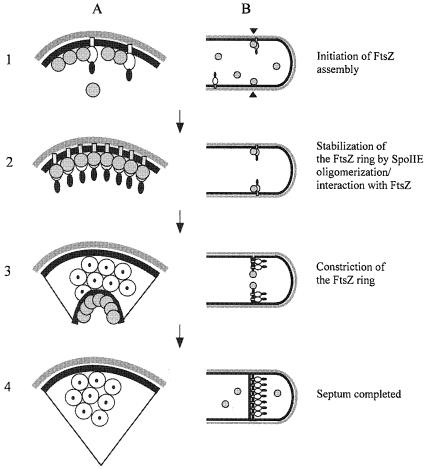Fig. 7. Schematic model of the interactions between FtsZ and SpoIIE. The outline of a pre-septational cell soon after initiation of sporulation is shown in cross-section (A) and longitudinal section (B). (1) FtsZ (grey circles) starts to assemble at a potential site for asymmetric division (black arrowheads). SpoIIE (domain I, open rectangle; domain II, open oval; domain III, black oval) begins to be made and is recruited to this site by direct interaction with FtsZ. (2) FtsZ ring formation is stabilized by its interaction with SpoIIE. (3) The FtsZ ring constricts at the leading edge of the developing septum and SpoIIE is released into the septum. (4) When septum formation is completed, FtsZ depolymerizes, whereas SpoIIE stays behind in the septum. Previous work has suggested that the SpoIIE protein from the ring is retained mainly on the prespore face of the septum (Wu et al., 1998; King et al., 1999).

An official website of the United States government
Here's how you know
Official websites use .gov
A
.gov website belongs to an official
government organization in the United States.
Secure .gov websites use HTTPS
A lock (
) or https:// means you've safely
connected to the .gov website. Share sensitive
information only on official, secure websites.
